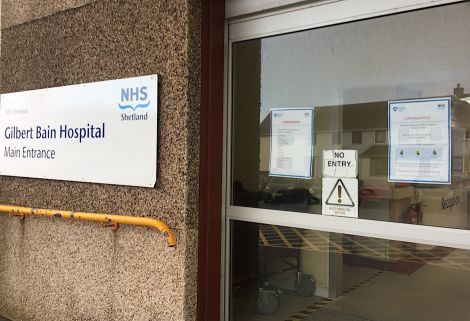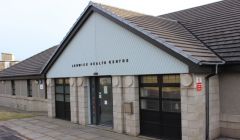Health / New approach could ease burden on A&E
System will offer alternative ways of accessing out-of-hours treatment
NHS Shetland is hopeful that the introduction of a new “urgent care” system will significantly reduce A&E waiting times at the Gilbert Bain Hospital.
The health service estimates that around one fifth of patients attending A&E could often receive the treatment they need through other “out of hours” care services.
Members of the Integration Joint Board (IJB), a joint forum featuring representatives of Shetland Islands Council and NHS Shetland, heard on Monday that there had been an increase in the number of patients using A&E in the past three years.
Interim director of community health and social care Brian Chittick told the board that eight per cent of patients waited longer than the four-hour target time in A&E in the first four months of 2020.
With Covid-19 making the importance of avoiding crowding in busy A&E departments all the greater, a new system in partnership with NHS24’s 111 service has been tried out.
The hope is that A&E waiting times will fall as patients are “hived off earlier into a more appropriate pathway”.
Part of the increase in A&E demand is attributed to “a lack of understanding of what services are available and challenges of access to scheduled appointments in both primary and secondary care”.
A new primary care emergency centre and a same-day emergency care service are to be publicised ahead of the system going live across Scotland from 1 December.
Shetland has received Scottish Government funding of £47,000 to cover the cost of redesigning urgent care.
Chittick said that in an encouraging six-week trial window, only one patient – 0.35 per cent – endured a wait of longer than four hours which was “quite a considerable change”, though he noted there “will be some small number variation” over time.
Become a member of Shetland News
Meanwhile, the board also heard that efforts are being redoubled to attract practitioners to Shetland to reduce the crippling annual bill for locum doctors.
Director of nursing and acute services Kathleen Carolan said that with 60 per cent of posts vacant across the whole of Scotland, the health board is having to be ever-more creative in finding ways to attract staff to the islands.
“We are looking at how we can create new models, new contracts for consultants, so they can work in Shetland but also pursue their own special interest in other health boards up and down the UK,” she said.
NHS Shetland is also working with global health providers to develop “collaborative posts” allowing people interested in working overseas to work here too.
Board member Shona Manson said the use of “creative and innovative” approaches was a great way of allowing doctors to “maintain their skills elsewhere with us gaining their skills here”.
Carolan said two doctors had been recruited, including a geriatrician who can work in both acute medical care and supporting the care of older people in hospital and in the community.
The model “does work” and it could substantially reduce NHS Shetland’s budgetary headache “if we can increase the number of people who want to work like that in Shetland”.
Become a member of Shetland News
Shetland News is asking its readers to consider paying for membership to get additional perks:
- Removal of third-party ads;
- Bookmark posts to read later;
- Exclusive curated weekly newsletter;
- Hide membership messages;
- Comments open for discussion.
If you appreciate what we do and feel strongly about impartial local journalism, then please become a member of Shetland News by either making a single payment, or setting up a monthly, quarterly or yearly subscription.







































































